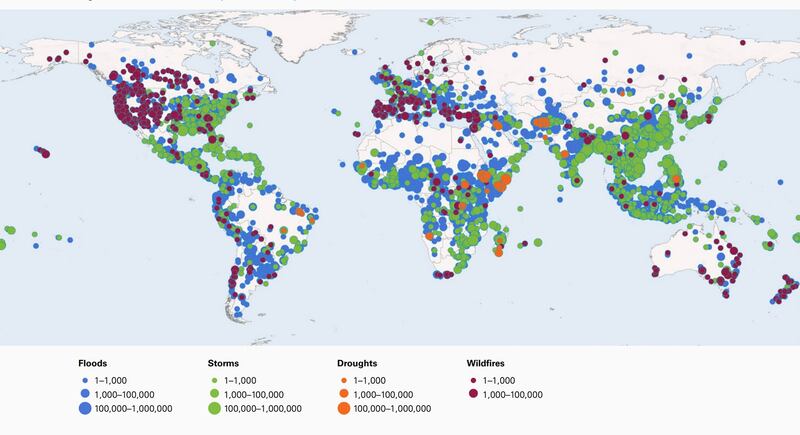More than 43 million children were internally displaced over six years due to climate change-exacerbated, weather-related disasters, with China, India and the Philippines leading the chart in absolute numbers, a U.N. agency said in a new report.
"While the link between climate change and displacement is complex, it's clearer than ever that the climate is shifting patterns of displacement," UNICEF said Friday in a statement, releasing the report, " Children displaced in a changing climate."
Between 2016 and 2021, the U.N. Children’s Fund said 43.1 million youngsters – or about 20,000 child displacements a day – across 44 countries were displaced in the most common weather-related hazards, including floods, storms, droughts and wildfires.
Floods and storms drove 95% of recorded child displacements. It was unclear how many of the 43 million children were, in fact, preemptive evacuees, as opposed to displaced for the short or long term.
“It is terrifying for any child when a ferocious wildfire, storm or flood barrels into their community,” said UNICEF Executive Director Catherine Russell.
“For those who are forced to flee, the fear and impact can be especially devastating, with worry of whether they will return home, resume school, or be forced to move again. Moving may have saved their lives, but it’s also very disruptive.”
“As the impacts of climate change escalate, so too will climate-driven movement.”

The report said 9.7 million child displacements in the Philippines alone, 6.7 million in India, and 6.4 million in China were due to all four hazards combined. The numbers were high due to geographic locations, exposure to extreme weather, large child populations, and progress made on early warning and evacuation capacities.
Bangladesh, Indonesia, and Vietnam came fourth, eighth, and ninth in the top-10 ranking based on absolute numbers, with 3.3 million, 960,000, and 930,000 children respectively displaced between 2016 and 2021.
Relative to the size of their child population, Dominica (76%) experienced the largest number of child displacements from all four disasters. The list included Vanuatu, the Philippines, and Fiji.
Between 2016 and 2021, floods displaced roughly 19.7 million children globally. India (3.9 million), China (3.7 million), and the Philippines (1.3 million) were hardest hit.
Similarly, storms led to the displacement of about 21 million children, with the highest numbers in the Philippines (8.3 million), India (2.8 million) and China (2.6 million).
Asia and the Pacific frequently experience storms, leading to mass evacuations. In 2020, Cyclone Amphan displaced 1.5 million children in India, Bangladesh, Myanmar, and Bhutan, while Typhoon Rai (Odette) displaced 1.5 million children in the Philippines, Palau, and Vietnam in 2021.
Droughts caused over 1.3 million child displacements in 15 countries, with 730,000 in Somalia, 340,000 in Ethiopia, and 190,000 in Afghanistan.
Wildfires, which primarily affected the Americas, displaced 810,000 children between 2016 and 2021, with the United States, Canada, and Israel seeing the highest child displacements at 610,000, 47,000, and 31,000, respectively.
Using a disaster displacement risk model, the UNICEF report predicted that riverine floods may displace an average of 3.2 million children annually, totaling 96 million over 30 years.
Cyclonic winds follow, potentially displacing over 10.3 million children, while storm surges might account for 7.2 million displacements in the same three-decade span.
“Given their large population, India, Bangladesh, Vietnam, the Philippines and China are the five countries with the most predicted future displacements of children owing to all hazards combined (riverine flood, cyclones and storm surges),” the report said.
Edited by Mike Firn and Elaine Chan.
